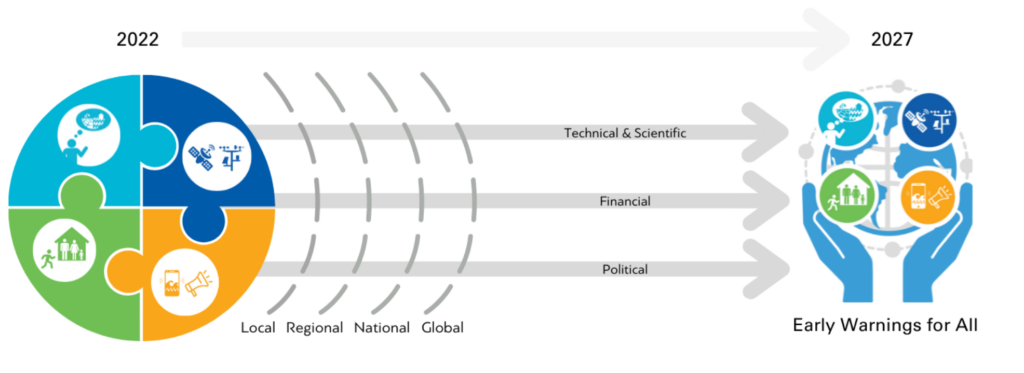
Early warning systems for all by 2027
ITU News
The people least responsible for climate change are suffering most from extreme weather, United Nations officials noted this week while stepping up plans to ensure everyone worldwide receives adequate warnings as natural disasters increase.
Today, half of countries still lack early warning systems, while fewer have regulatory frameworks linking early warnings to emergency plans. The UN Early Warnings for All Initiative (EW4All) aims to ensure everyone on Earth is protected by early warning systems by 2027.
Digital technologies form an increasingly crucial component of national disaster-readiness infrastructure, enabling effective dissemination of early warnings.
“When disaster strikes, people and communities can turn to technology as a lifeline,” said Doreen Bogdan-Martin, Secretary-General of the International Telecommunication Union (ITU), which is leading one EW4All pillar.
As the impact of climate change becomes ever more apparent, vulnerable developing countries are paying the heaviest price. People in Africa, South Asia, South and Central America, and small island states are 15 times more likely to die from climate disasters, according to UN statistics.
In response, EW4All is promoting programmes to strengthen climate mitigation in developing countries. The World Meteorological Organization (WMO) and the United Nations Office for Disaster Risk Reduction (UNDRR) are spearheading the initiative, with UN technology agency ITU and the International Federation of Red Cross and Red Crescent Societies (IFRC) also providing crucial input.
Preventable disaster deaths
Countries with effective early warning systems have disaster death rates that are eight times lower than countries without, suggesting most disaster deaths are preventable.
Early warning systems offer a relatively cheap and effective way of protecting people and assets from hazards, including storms, floods, heatwaves and tsunamis. The Global Commission on Adaptation has found that spending just USD 800 million on them in developing countries would avoid losses of USD 3 billion to USD 16 billion per year.
Alerts can be sent via radio and television channels, by social media, and with traditional sirens. But whichever mix of technologies and channels each country chooses, ITU recommends following the Common Alerting Protocol (CAP) to keep data and messages coherent.
“By leading the work of the UN Early Warnings for All Initiative on ‘Warning Dissemination and Communication’, ITU is helping ensure that those at risk can act in time in our increasingly climate-vulnerable world,” ITU Secretary-General Bogdan-Martin added.
Investing in disaster-readiness
The EW4All initiative calls for targeted investments of USD 3.1 billion between 2023 and 2027 to strengthen disaster risk knowledge, observations and forecasting, preparedness and response, and communication of early warnings.
UN Secretary-General António Guterres has convened an Advisory Panel to mobilize political, technological and financial clout behind EW4All’s four Multi-Hazard Early Warning System pillars:
- Disaster risk knowledge and management (USD 374 million), led by UNDRR with support from WMO.
- Detection, observations, monitoring, analysis and forecasting of hazards (USD 1.18 billion), led by WMO with support from the UN Development Programme (UNDP), UN Educational, Scientific and Cultural Organization (UNESCO) and UN Environment Programme (UNEP).
- Dissemination and communication (USD 550 million), led by ITU with support from IFRC, UNDP, and WMO.
- Preparedness and response (USD 1 billion), led by IFRC with support from the Risk-informed Early Action Partnership (REAP), UN Office for the Coordination of Humanitarian Affairs (OCHA), UN Food and Agriculture Organization (FAO), and World Food Programme (WFP).
Officially launched by the UN Secretary-General last November, the initiative calls for the whole world to be covered by early warning systems by the end of 2027.

EW4All is co-led by WMO and UNDRR and supported by ITU and IFRC as pillar leads, with FAO, OCHA, UNDP, UNEP, UNESCO, REAP, and WFP as implementing partners.
Header image credit: Adobe Stock
